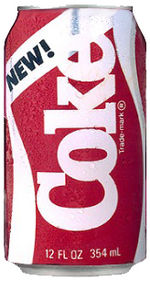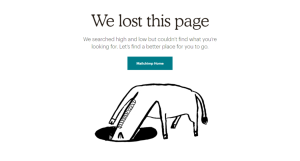
Building trust with your readers can be difficult. In most cases, you are marketing to people who don’t really know you and have no reason to trust you.
It’s important to gain the trust of your readers if you want them to believe what you have to say. It is a vital part of succeeding as a blogger. There are a number of things you need to do in order to build a blog that is trustworthy and a loyal following of readers who will not only return to your site time and time again, but will also become loyal customers who buy your products or services.
4 Simple Ways to Build Trust
There are some key things you’ll need to pay attention to if you want to build trust with your readers.
# 1 Be Honest
The number one thing you can do to build trust with your readers is to be upfront and honest with readers. For example, you want to state your policies up front.
If the reader shares her email address, what will you do to protect that information?
Don’t try to make products or services sound like more than what they are. You should sell a product that is so great that you don’t have to lie about it to show its benefits.
If you promise something, follow through.
Kristine B. Snively, Founder & CEO of Pristine Public Relations, Inc., holds an MBA and has quite a few ideas on how to build trust with your readers.
“
Always use credible sources and provide trustworthy links to those sources in your posts. The worst thing a blogger can do is post information that is out-dated, inaccurate or simply not true. This is one of the easiest ways to build ‘distrust’ with your readers.”
Kristine also adds:
“If your blog appears high in the search engines, this is going to immediately build trust among readers. Google and other search engines reward websites for producing unique, quality content. Blogging on a consistent basis gives search engines new content to index, which will help raise your site’s ranking over time. A higher ranking means more traffic.”
Building credibility means being consistent over and over again and staying true to your site’s mission and your values.
# 2 Apologize for Mistakes
If you make a mistake, such as putting incorrect information out there, own up to it.
- Point out the mistake you made.
- Apologize for it.
- Rectify the mistake if you can, such as providing the correct information.
- Explain what you’ll do in future to avoid the same mistake.
Everyone makes mistakes. Readers can understand if you made an honest mistake. Where most people get into trouble is trying to cover up that mistake instead of fixing it.
Kristine suggests linking to credible sources to prove your points. “Always use credible sources and provide trustworthy links to those sources in your posts. The worst thing a blogger can do is post information that is out-dated, inaccurate or simply not true. This is one of the easiest ways to build “distrust” with your readers.”
Linking to credible sources does a couple of things for you. First, it shows your readers that you aren’t the only one that believes this to be true. Second, it keeps you accountable. If you have to prove your point with a source, you are more likely to make sure that fact is accurate.
# 3 Develop Authority in Your Area
If you are seen as a leader in your niche, readers are going to automatically trust you more. Kristine added these tips:
Becoming an authoritative source in your industry takes time and hard work. Producing quality content consistently over time is an excellent way to achieve this. No matter your business type or size, you can build trust with your customers by providing valuable information in your blog posts. When it comes to blogging your biggest challenge will be gaining a loyal following. To do this, make the content genuine, useful and interesting for readers. ·
However, just because you are making your content useful doesn’t mean it shouldn’t show off your unique voice and talents.
“Inject your personality into every post. For example, if you are blogging on a particular topic, along with the tips you are proving readers, remember to share your opinion, your personal views and experiences.”
Another tip that Kristine shares has to do with who you showcase on your site and who you link to:
“Showcase the media outlets, popular blogs and sites your content has been featured in. This can include interviews, guest blogging spots, awards, and any expert panels you have been on. Showcase these accolades in the sidebar or footer of your website. This will help establish you as an expert in your field and build credibility and trust among your readers.”
As always, writing in-depth content that offers value to the reader is the best way to keep readers engaged and turn them into customers.
# 4 Target Demographic = Intelligent People
Oxford University completed a survey that showed people who are intelligent trust others more. Attract more intelligent readers by:
- Creating intelligent, well thought out content.
- Posting on forums where intelligent people hang out. Read the comments to see how smart the discourse is.
- Seek out other smart people to recommend your site to others.
- Although you don’t have to have an education to be smart, you can narrow your target audience to those with degrees or advanced degrees for the purposes of advertising.
Put content out that will have value both today and tomorrow. This alone will ensure that you attract readers who want to read smart articles.
# 5: Gather Testimonials & Reviews
When it comes to building trust online, reviews and testimonials from others is something that people do consider.
63% of customers report that they are more inclined to make a purchase if the site has user reviews. Consumer reviews are trusted about 12 times more than a simple description from the manufacturer.
Kristine Snively added:
“Display testimonials prominently. When site visitors see these, it provides you with immediate credibility. Remember to always request these from happy customers and clients.”
# 6: Make It Personal
Do you trust people you can see and know personally more than strangers? Of course you do, and the same is true for your site visitors. Fortunately, there are several things you can do to personalize your blog:
- Add a profile picture. Not only will readers feel like they know you when they see your photo, but they will instantly recognize you other places on the Web, such as social media sites or when you guest post on another blog.
- Include an About page. Offer details about why you started the blog and what makes you uniquely qualified to write on this topic. Go ahead and let your personality shine through on your About page. If you have a great sense of humor, add some funny stories to your bio. If you’re more serious, then keep to that general tone on all your pages.
- Snively shared: “Inject your personality into every post. For example, if you are blogging on a particular topic, along with the tips you are proving readers, remember to share your opinion, your personal views and experiences.”
In fact, one of the worst mistakes you can make is trying so hard to look “professional” that you don’t share your personality. Snively shared that she made this mistake herself:
“One mistake I can think of that’s pretty common and something I did starting out was not injecting enough of my personality into my blog posts. I was focused on the facts more than anything else. It’s okay to be more conversational in your writing when it’s your blog.
Today, I include relevant case studies, client success stories and personal experiences into my blog postings. Readers want to know what makes your content on a particular topic or issue unique, what makes it stand out. Here are some tips that have helped inject more personality into my blog postings…
- Sharing personal experiences (good & bad), client success stories and opinions;
- Engage readers with your sense of humor (when appropriate);
- Develop a unique blogging voice that speaks to your followers;
- Let readers know who you are and inject this into your posts. Blogging allows you to show a more personal side of you business, connecting with potential new customers while maintaining existing relationships.”
# 7: Always Communicate
If a reader takes the time to visit your blog, read your post, and then comment on it, you should take the time to respond to that reader.
As Akshay Hallur said over on his own blog GoBloggingTips, “Readers are human beings. They tend to value people who care them or help solve their problems.”
What problems are you solving for your readers? Kristine Snively added:
“Respond to reader comments. Readers who post positive comments on your blog appreciate your content, let them know you appreciate their feedback. You can do this in one line and it will mean a lot.”
Examples of Big Brands Making Stupid Marketing Choices
You can learn a lot by studying what well-known brands have done that have harmed their reputation. There are dozens upon dozens of examples available, but a few that come to mind include:
# 1 Coca-Cola

Permission: Wikimedia Commons
Back in the 1980s, Coke got the brilliant idea to change their formula for the first time in almost 100 years and release the new taste as “New Coke”.
Within less than three months, there was such an outcry from consumers that they then released “Coke Classic” which was essentially the same old formula.
The company lost the trust of consumers in two ways with this decision. First, those who thought the New Coke fad was a legitimate direction the company wanted to go were angry that they could no longer get their favorite soft drink. They no longer trusted the formula or particularly like it.
On the other hand, a portion of the population believed that it was all a marketing ploy by the company to get people to buy more Coca-Cola. If it was, it was a brilliant one because, after the release of Coke Classic, sales climbed and continued to do so.
However, the move shattered the trust people had in the brand. To this day, if you mention New Coke, you’ll get dissatisfied groans from consumers. Even though Coke eventually redeemed their brand name, the breach of trust may have lost them some customers forever.
If your readers expect a certain tone, attitude, or content from you, then keep that in mind when you add new features. Any major shifts might lose you readers.
# 2: Amazon Prime
In 2015, Amazon hosted the first Prime Day event. They touted the event as a second Black Friday and built up expectations to a fever pitch.
Unfortunately, when the day finally arrived, the sales didn’t quite meet expectations. People began to entertain themselves at Amazon’s expense by posting comments on Twitter with the hashtag #PrimeDayFail.
Below are a few examples and the hilarious comments that go with them:
Damn been waiting for the PS4 to go down 10 cents #AmazonPrimeDay pic.twitter.com/eIiThMX9IT
— lupe (@cherryyyybomb) July 15, 2015
Remember when Peppermint Patty went to Charlie Brown’s house expecting turkey, but got popcorn and toast? Its kinda like that! #PrimeDayFail
— RMC62970 (@rcarlson62970) July 16, 2015
When I die, I want whoever was responsible for #PrimeDay to lower me down into my grave so I can be let down one more time.
— Simon (@simonzhow) July 15, 2015
You get the idea. Basically, Prime Day was built up so much that what was offered wasn’t nearly as appealing as what was promised. This is an important lesson for bloggers. Always offer far more than what you promised your readers.
Brands with the Right Idea
In a survey conducted by Nielsen, they found that there are 10 brands that consumers trust the most. The Nielsen survey found that women control about 73%, or 4.3 trillion, of US spending. A few brands stood out from the crowd and were seen as having a “long history of consistently delivering on their brand promise.”
# 1: Ziploc Food Storage Brands
This brand is highly popular with women. The reason is simply that it works to hold in liquids and keep foods fresh. Ask any woman and she’ll tell you this brand does the best job of accomplishing those simple feats.
If you take a look at the reviews on Amazon, as just one example, Ziploc has 4.6 out of 5 stars out of 168 reviews for just one version of their storage bags.
Remember before when we talked about the importance of reviews and testimonials? Ziploc seems to instinctively understand this and deliver on it.
# 2: BAND-AID
Interestingly, the study broke down the trust factor by gender and BAND-AID ranked high on both the men’s and women’s lists of most trusted brands. People trust BAND-AID because they are reliable and stay adhered to cuts and scrapes.
Even though the brand competes with some less expensive options and off-brand choices, consumers tend to stick with this brand because they trust the product to fulfill its promise to “stick on me”.
The product has one job only – to stay stuck on skin. The brand delivers on that promise. It is a simple example, but a good one. To repeat their success, you simply must figure out what the purpose of your blog is and then fulfill that promise for your readers.
Converting Readers Into Customers
It’s all fine and well to develop trust and drive readers to your blog, but how do you then convert them into customers? I would argue that if your readers don’t trust you, at least in some small measure, that it will be next to impossible to get them to buy anything.
Start by gaining their trust. Mean what you say and say what you mean. Stick to your promises. Develop a following.
Once you’ve developed a relationship with your customers, find out what their needs are. You can do this via:
- Surveys
- Studying questions asked
- Market research of your target demographic
Now, figure out how you can meet the needs that your readers have with a product or service. If you focus on solving a problem for your readers, then the step between a loyal reader and a customer is a small one.
Business & Finance Articles on Business 2 CommunityThis article originally appeared on Web Hosting Secret Revealed and has been republished with permission.
Find out how to syndicate your content with Business 2 Community.
(24)






